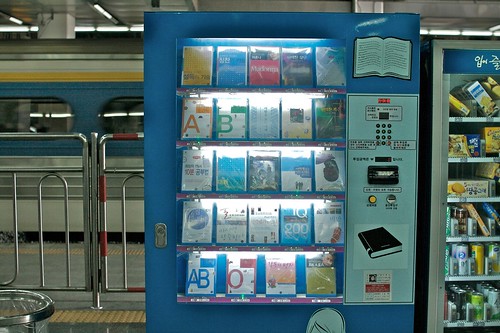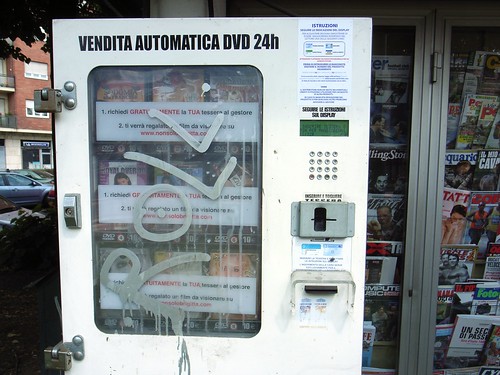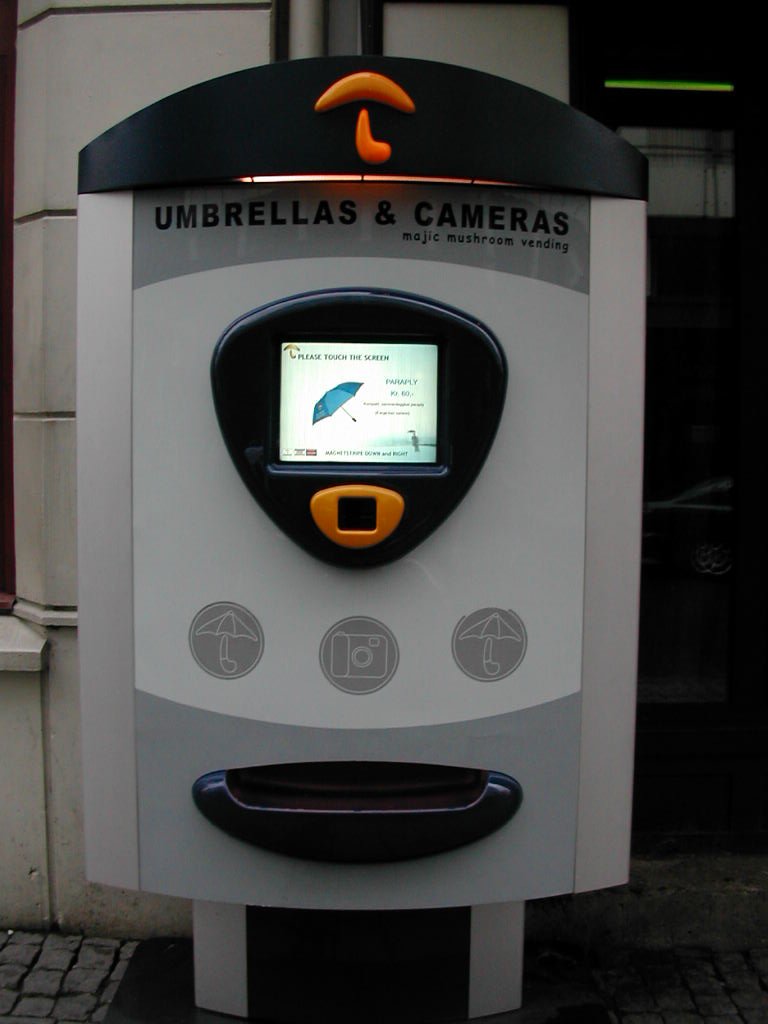Yesterday, in a very small village in the French Alps, I ran across this fascinating bread vending machine. It made me think about other encounters with not-so-common machines such as a book delivery system in Seoul:

Or this pr0n vending machine in Torino:

And the camera/umberall combo in Bergen, Norway:

Why do I blog this? Looking at what is sold in vending machine is an interesting cultural indicator that it’s always refreshening to observe. It says something about convenience and what is “acceptable” to be served by a non-humans.
In the French “bread” case, an naive observer would say that it’s the end of the world and no French people wants its bread to be delivered in such a mechanized way. To these, I would say that: (1) The French are definitely used to this sort of weird machinery: pizza making devices on parking lots started to appear here and there, (2) It’s not because it’s a machine that the bread is bad. You can’t see it in the picture above but the bread pieces are wrapped in typical french paper, and the presence of flour in the machine makes it certainly more baker-like.
In addition, the understanding of such devices is tightly related to contextual issues. You don’t find these machines anywhere. The camera/umbrella one in Norway is present in a touristic area (where rain is sadly common), the porn machine is located in a gloomy suburb in Torino (where other forms of newspaper shops are absent or much too difficult to visit with this kind of literature), the bread machine is located in a place where shops are totally absent and it can be used by people form the neighborhood (as a dropping point).
Now, why is this important in a blog about interaction design? Simply because these machines are designed by people… who certainly need to understand human needs, contextual issues, technological constraints and business model problems. They seem blank and not interesting but I actually find them intriguing.
